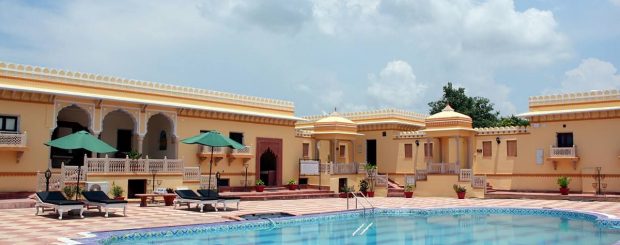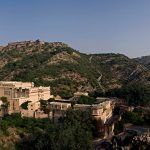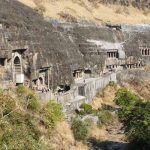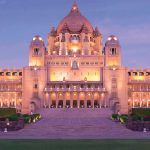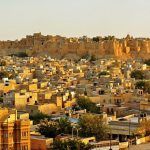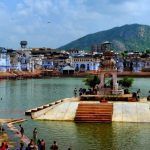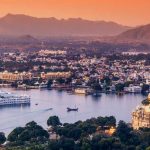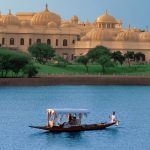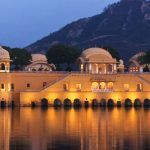Royal Rajputana Tour Package Rajasthan
Day 1: Arrive Delhi
Meeting and assistance on arrival at International airport and transfer to hotel. On arrival, check in at the hotel.
Delhi: India’s capital & a major gateway to the country, contemporary Delhi is a bustling metropolis which successfully combines in its fold the ancient & the modern. Its strategic location was one of the prime reasons why successive dynasties chose it as their seat of power. New Delhi also reflects the legacy the British left behind. The division between New & Old Delhi is the distinction between the capitals of the British & the Moghuls respectively. So, wherever the visitor goes, he will invariably confront the city’s past.
Day 2: Delhi
Morning city tour of Old Delhi. Visit Jama Masjid, the largest mosque in India. Built by Shah Jahan, the construction was started in 1844 and was not completed until 1658; Red Fort, which was also built by Shah Jahan. This massive fort was built from 1638 to 1648; Chandni Chowk and Raj Ghat – the cremation site of Mahatma Gandhi.
Afternoon city tour of New Delhi. Visit Humayuns Tomb: built in mid 16th century this is an early example of Mughal architecture; Qutab Minar, drive past India Gate, President House, Connaught Place. The tour ends with a visit to Laxmi Narayan Temple.
Day 3: Delhi – Mandawa (By Surface)
Morning drive to Mandawa. Arrive Mandawa and check in at Castle Mandawa.
Afternoon, visit Mandawa (Shekhawati region). This region came into prominence in the 14th century when a number of Muslim clans moved into the area and the towns of this region developed into important trading posts on the caravan routes emanating from the ports of Gujarat.
This region is famous for painted havelis (houses) most of which date back from the 18th century. The major towns of interest are Mandawa, Fatehpur, and Nawalgarh. Visit the havelis in Mandawa and other villages of Shekhawati region.
Day 4: Mandawa – Khimsar (By Surface)
Morning drive to Khimsar. Upon arrival, check-in at Khimsar Fort : Perched on the edge of the Great Thar Desert in the heart of rural India lies this unique 16th century fort that offers experience after exhilarating experience. The battle-scarred walls & turrets remind of the glorious past. Hundreds of years of history unfolds as you glance at its battle-scarred walls and stroll down its ramparts. As you sip tea on the terraces you realize the beauty of being surrounded by acres of lush green gardens. A true rarity of any desert in the world!!! Peacocks, parrots, pigeons and as many as forty six varieties of birds greet you to add to the charm and splendor of this ancient fort. Today, Khimsar Fort has been awarded the ‘GRAND HERITAGE AWARD FOR EXCELLENCE’ (this being the highest recognition conferred upon any heritage property by the Department of Tourism, Government of India). You are not prepared for the beauty, the grandeur, the layout or the magnificence of this castle even as you approach it through sand dunes and narrow countryside roads. It suddenly hits you on a blind corner.
In the afternoon, witness a magnificent sunset on the sand dunes.
Day 5: Khimsar – Luni (By Surface)
Morning drive to Luni. Arrive Luni and check in at Fort Chanwa: an exceptional example of elegance and symmetry in Indian architecture of the last century. The entire fortress is carved out of the famous red sandstone of Jodhpur and with its ornately carved lattice work friezes and intricate “Jharokas”; it exquisitely captures the romance and grace of a bygone age. The fort is composed of a lyrical complex of courtyards towers, water, wheels, stables, passages and unexpected stairways to secret pavilions and panoramic roof tops spanning the village below and the Thar horizon beyond. The traditional paintings on the walls harmoniously reflect the skill of the master craftsmen and the bygone days.
The village of Luni nestles in the shadow of the Fort walls and is a hub of activity with its many artisans fashioning metal, clay or wood into intricate forms and demonstrating the skills passed down over the centuries by their ancestors. The village elders solemnly reflect the changing times under shady trees, while the children enjoy running around narrow carefree streets. The women, swaying in their brilliant Rajasthani colors go about their daily chores to give water and sustenance to the village. The Fort has been beautifully restored to its former glory by its owners Maharaja Dalip Singhji, (The youngest son H.H Maharaja Umaid Singhji) and his wife Rani Madhu. Each room has been created and decorated with its own particular charm and the many courtyards, verandahs and gardens all offer a setting and ambiance set to capture your heart.
In the afternoon, excursion to Jodhpur. Visit the Mehrangarh Fort which literally means “Majestic Fort”, located at the very centre of the city. There are, in all, three gates, each built to commemorate a particular victory, as well as to reinforce the fort. It has a collection of musical instruments, palanquins, furniture & cannons on the forts ramparts are well preserved.
Jaswant Thada: Close to the fort complex lies this white marble cenotaph, built in 1899, in commemoration of Maharaja Jaswant Singh II. Rare portraits of Jodhpur’s rulers are, also, to be seen at Jaswant Thada.
Day 6: Luni – Ranakpur – Deogarh (By Surface)
Morning drive to Udaipur en route visit the Jain temples at Ranakpur – The cluster of temples, made of intricately sculpted white marble, come across as a marvelous feat of architecture. It would take anyone by surprise to learn that they were built in 1460, so well preserved & sparkling is the marble. The main temple is supported on 1,444 pillars none of which is similarly carved. After the visit, continue drive to Deogarh.
Arrive Deogarh and check in at Deogarh Mahal: is an imposing structure built in the 17th century. It stands atop a hill and offers a commanding view of the Aravalli mountain range and the numerous lakes, strewn across the countryside. With its graying battlements, domes, turrets, Jharokas and huge gateways, it is a picturesque sight from the town below. At a height of about 2100 ft above sea level, it is cooler than surrounding Rajasthan. Built in 1670 A.D. by Rawat Dwarka Dasji as a family residence, it soon became the hub of village activity. The family interacted with the villagers and invited a host of feasts and festivities to be performed within the Mahal precincts. Some of these traditions are still practiced. And the gates, that always remained closed, to ward off enemies, are now open to the guests. Deogarh lies on the borders of Mewar, Marwar and Merwara, about 80 miles north-east of Udaipur. Its chieftain known as ‘The Rawat’ was one of sixteen umraos (feudal barons) privileged to wait upon the Maharana of Udaipur, the capital of Mewar such feudal estates, called ‘thikanas’ were granted by the ruling Maharana to a nobleman either due to blood relationship or for an act of bravery.
Day 7: Deogarh – Udaipur (By Surface)
Morning free to explore the Palace & its surroundings.
Afternoon drive to Udaipur – The city of Lakes, Udaipur is a lovely blend of water, lush green hills that set fire and passion in poet. Its palaces are straight out of a fairy-tale book, lakes, forts, palaces, temples, gardens, mountains and narrow lanes lines withdrawn with stalls, relives the reminisces of a heroic past, valor and chivalry. Their reflection in the placid waters of the Lake Pichola is excitement that defines imagination. Udaipur is one of the most romantic cities of world; also know as the Venice of East. On arrival, check in at the hotel.
Day 8: Udaipur
Morning visit the romantic city of Udaipur. Visit the City Palace which is the largest palace complex in Rajasthan; Jagdish temple, a fine Indo Aryan temple built in 1651; Sahelion ki Bari or Garden of the Maids of Honour, which is a small garden with its fountains, kiosks, marble elephants & lotus pool.
Late afternoon boat ride on Lake Pichola.
Day 9: Udaipur – Chittorgarh – Pushkar (By Surface)
Morning drive to Pushkar en route visiting Chittorgarh. The hilltop fortress of Chittorgarh epitomizes the whole romantic ideal of Rajput chivalry. The fort was sacked 3 times from 1303 to 1568 by a stronger enemy and on each occasion, the end was “Jauhar”. The men donned the saffron robes of martyrdom and rode out from the fort to certain death and the women and children immolated themselves on a huge funeral pyre.
After the visit, continue drive to Pushkar. The holy lake of Pushkar is believed to have been created by Lord Brahma himself. It is as important as Banaras or Puri. Devout Hindus believe that it is essential to visit Pushkar at least once in their lifetime. No pilgrimage is considered complete without a dip in the holy Pushkar Lake. Pushkar has as many as 400 temples and 52 Ghats and the only temple in the country that is dedicated to Brahma is to be found here. While Pushkar is a heaven for the religiously inclined, it is also the venue of one of the country’s most colorful cattle fairs – the Pushkar Fair.
On arrival, check – in at the hotel.
Afternoon free to visit the temples in Pushkar.
Day 10: Pushkar – Jaipur (By Surface)
Morning, drive to Jaipur: The capital city of the state of Rajasthan also knows as “Pink City” owes its name, its foundation and planning to the great warrior astronomer Maharaja Jai Singh II. The city of Jaipur has broad avenues. The city sits on a dry lake bed in a wild and somewhat arid landscape, surrounded by barren hills surmounted by fortresses and crenellated walls.
Upon arrival, check-in at hotel. Rest of the day at leisure.
Day 11: Jaipur
Morning excursion to Amber Fort with Elephant ride from the foothills of the Aravallis to the fort entrance.
Amber Fort: At a distance of 11 kms from Jaipur, Amber was the ancient capital of Jaipur state. Construction of the fort began in 1592 by Raja Man Singh, the Rajput commander of Akbar’s army and is a superb example of Rajput architecture.
Afternoon city tour of Jaipur visiting the City Palace which has museum having an extensive collection of art, carpets, enamel ware and weapons; Jantar Mantar – the Observatory built my Maharaja Jai Singh in 1728 and drive past Hawa Mahal (Palace of Winds).
Day 12: Jaipur – Fatehpur Sikri – Agra (By Surface)
Morning drive to Agra en route visit the abandoned Mughal city of Fatehpur Sikri: built by Emperor Akbar in 1569, was the old capital of the Mughals, which was abandoned after 15 years due to scarcity of water. See the graceful buildings including the Jama Masjid, Tomb of Salim Chishti, Panch Mahal & other Palaces which are still preserved in its original glory.
Continue drive to Agra. Arrive Agra and check-in at hotel. Rest of the day at leisure.
Day 13: Agra – Delhi (By Surface)
Morning city tour of Agra visiting Red fort, which was built by Emperor Akbar in 1565, and additions were made up until the time of his grandson, Shah Jahan. It contains the hall of public and private audiences amongst many other beautiful structures; Itmad-ud-Daulah, which was constructed by Nur Jahan between 1622 and 1628 and is very similar to the tomb she constructed for her husband, Jahangir, near Lahore in Pakistan; the highlight of the day – The Taj Mahal, which was constructed by Shah Jahan in memory of his wife Mumtaz Mahal. Construction of the Taj began in 1631 and was not completed until 1653.
Afternoon drive to Delhi en route visit Sikandra – Mughal Emperor Akbar’s Mausoleum. Continue drive to Delhi. Arrive Delhi and check in at hotel.
Day 14: Depart Delhi
In time transfer from hotel to International airport to connect flight for onward destination.
Rajput Experience Rajasthan Tour, Royal Rajputana Tour Package Rajasthan, Rajput Experience Tour Rajastha, Rajput Heritage Tour of Rajasthan, Rajput Heritage Tour, Rajasthan Rajput Heritage Tour
Social Share
Rajasthan Tours
Lesser Known Gems of Rajasthan Tour
The Heritage Trail Tour
Royalty & Tiger Tour
Traversing Rajasthan Tour
Pushkar a Cultural Odyssey Tour
Highlights of Rajasthan Tour
Classic Rajasthan Tour
Imperial Rajasthan Tour
Royal Rajasthan Tour Package
Contact Us
Prish India Tours
(A unit of Prish Tours Pvt. Ltd.)
139, First Floor, Vardhman Crown Mall, Plot No. 2, Sector 19, Dwarka, New Delhi – 110075, (India).
+91 11 4166 1466
+91 98104 07877, 98109 30054

